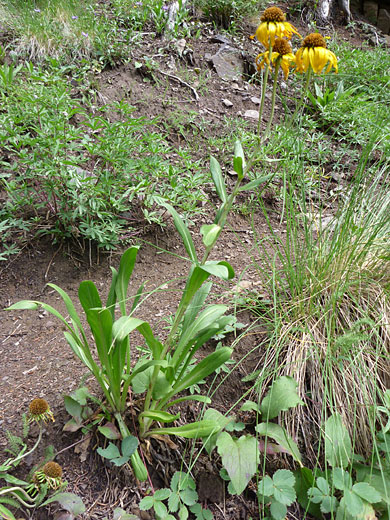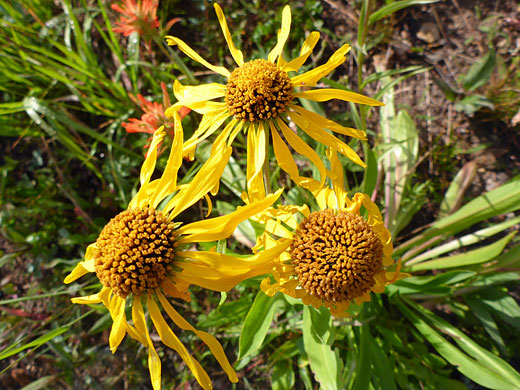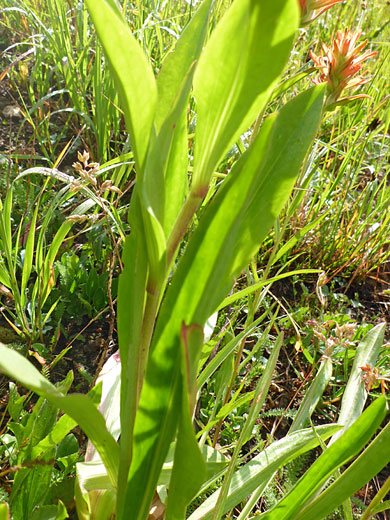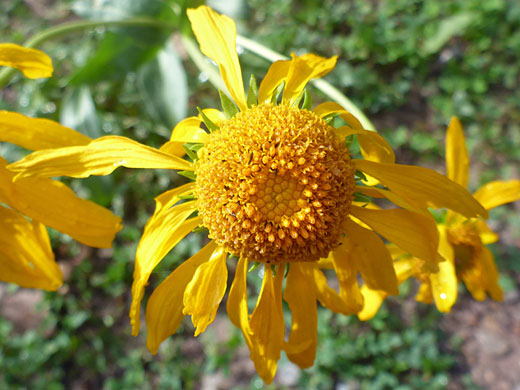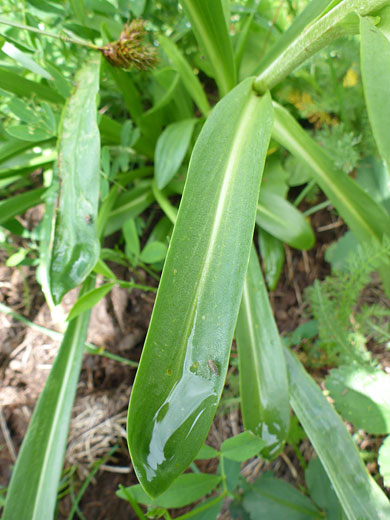Common names:
Orange sneezeweed, owl's claws
Family:
Scientific name:
Hymenoxys hoopesii
Synonym:
Dugaldia hoopesii
Main flower color:
Range:
The Rocky Mountain states, and scattered areas further west
Height:
Between 1 and 3 feet
Habitat:
Meadows, open woodland; up to 9,500 feet
Leaves:
Narrow, oblong to oblanceolate at the base and up to 6 inches long; shorter and more linear on the stem
Season:
July to September
The large yellow flowers of hymenoxys hoopesii are similar to dozens of others in the asteraceae family. They have between 14 to 26 ray florets (up to 1.5 inches in length), often rather untidily arranged and with gaps between adjacent petals, around a center of darker yellow to brownish disc florets, which form a raised, hemispherical mound as they mature. The phyllaries are in two rows, the outer set lanceolate in shape, and over half an inch long, radiating outwards and visible beneath the ray petals.
Flowers grow in small numbers at the top of the stout stalk, which can reach a height of 3 feet. The leaves are quite distinctive owing to the central vein, which is white, and unusually wide, especially towards the base. Stems and phyllaries have a fine hair covering, but the leaves are mostly hairless, with smooth edges.
Flowers grow in small numbers at the top of the stout stalk, which can reach a height of 3 feet. The leaves are quite distinctive owing to the central vein, which is white, and unusually wide, especially towards the base. Stems and phyllaries have a fine hair covering, but the leaves are mostly hairless, with smooth edges.
All Contents © Copyright The American Southwest | Comments and Questions | Contribute | Site Map



